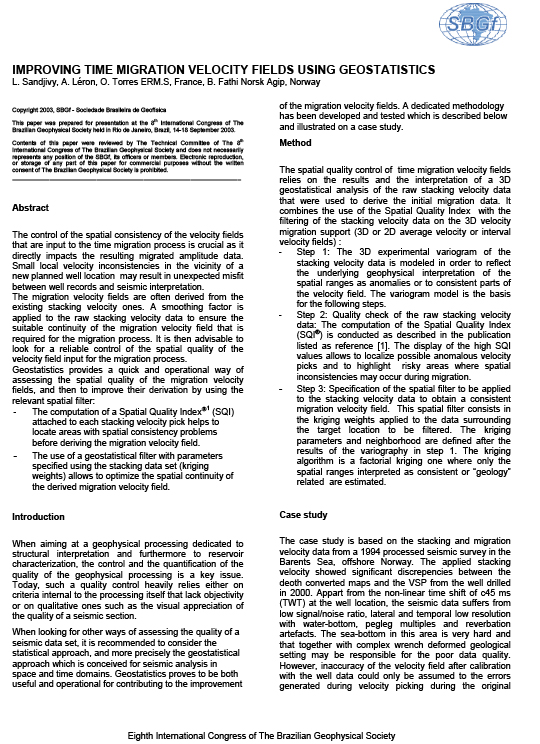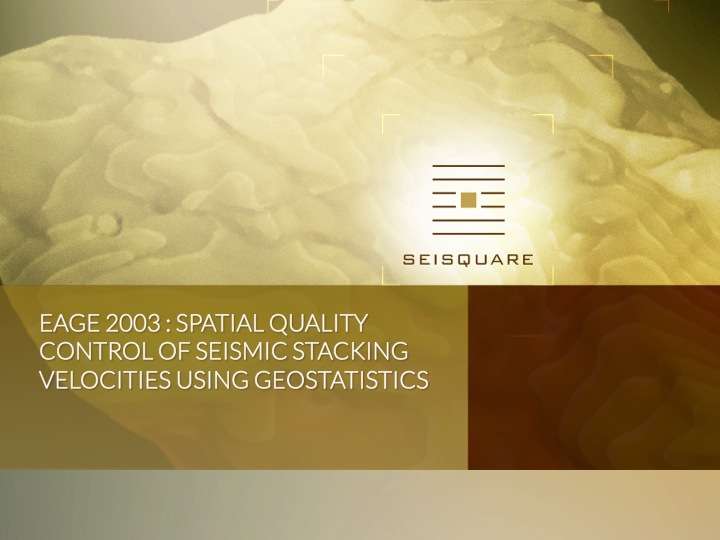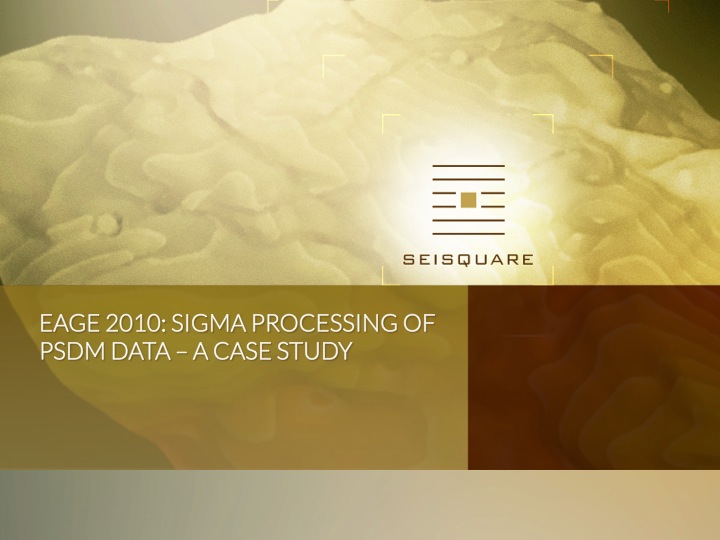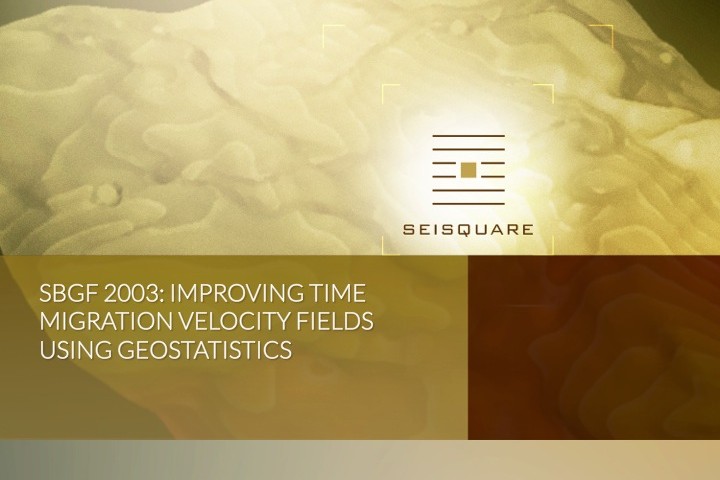The control of the spatial consistency of the velocity fields that are input to the time migration process is crucial as it directly impacts the resulting migrated amplitude data. Small local velocity inconsistencies in the vicinity of a new planned well location may result in unexpected misfit between well records and seismic interpretation. The migration velocity fields are often derived from the existing stacking velocity ones. A smoothing factor is applied to the raw stacking velocity data to ensure the suitable continuity of the migration velocity field that is required for the migration process. It is then advisable to look for a reliable control of the spatial quality of the velocity field input for the migration process. Geostatistics provides a quick and operational way of assessing the spatial quality of the migration velocity fields, and then to improve their derivation by using the relevant spatial filter:
- The computation of a Spatial Quality Index 1 (SQI) attached to each stacking velocity pick helps to locate areas with spatial consistency problems before deriving the migration velocity field.
- The use of a geostatistical filter with parameters specified using the stacking data set (kriging weights) allows optimizing the spatial continuity of the derived migration velocity field.





